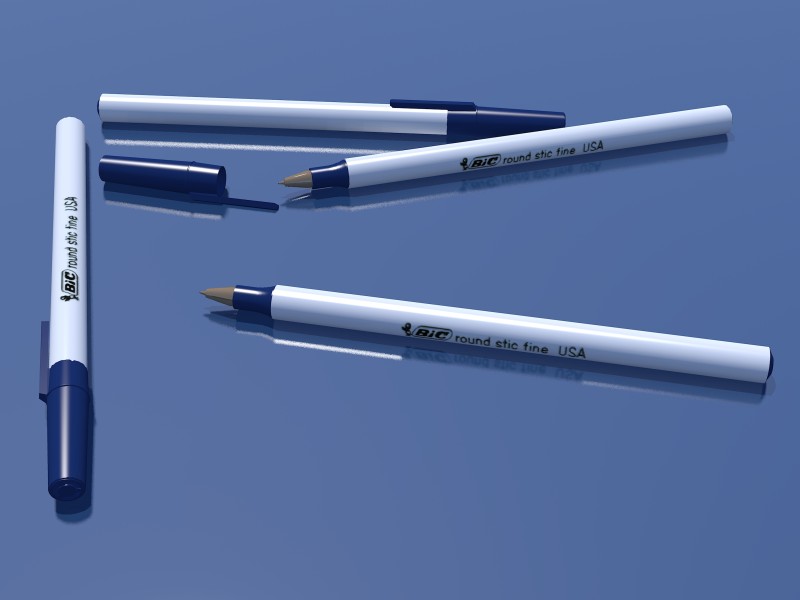TITLE: Debugging by Biction
AUTHOR: Eugene Wallingford
DATE: April 03, 2009 1:24 PM
DESC:
-----
BODY:
Gus Mueller, creator of
one of my favorite tools,
VoodooPad, recently wrote a short note on
debugging his designs and programs:
I learned a long time ago that the two best debugging
tools I own are a nice piece of paper, and a good
pencil.
 Writing something down is a great way to "think out
loud". My
Ghostbusters-loving
colleague, Mark Jacobson, calls this biction.
He doesn't define the term on
his web page,
though he does have this poetic sequence:
Writing something down is a great way to "think out
loud". My
Ghostbusters-loving
colleague, Mark Jacobson, calls this biction.
He doesn't define the term on
his web page,
though he does have this poetic sequence:
Bic pen, ink flowing, snow falling, writing, thinking, playing, dancing
That sounds fanciful, but biction is a nuts-and-bolts
idea. The friction of that Bic pen on the paper is
when ideas that are floating fuzzily through the mind
confront reality.
Mark and I taught a data structures course together
back in the 1990s, and we had a rule: if students
wanted to ask one of us a question, they had to
show us a picture they had drawn that illustrated
their problem: the data structure, pointers, a bit
of code, ... If nothing else, this picture helped
us to understand their problem better. But it
usually offered more. In the process of showing
us the problem using their picture, students often
figured out the problem in front of our eyes. Other
students commented that, while drawing a picture in
preparing to ask a question, they saw the answer
for themselves. Biction.
Of course, one can also "think out loud" out loud.
In response to my post on
teaching software engineering,
a former student suggested that I should expose my
students to pair programming, which he found "hugely
beneficial" in another course's major project, or
at least to
rubber duck debugging.
That's biction with your tongue.
It may be that the most important activity happens
inside our heads. We just need to create some
friction for our thoughts.
-----
 Writing something down is a great way to "think out
loud". My
Ghostbusters-loving
colleague, Mark Jacobson, calls this biction.
He doesn't define the term on
his web page,
though he does have this poetic sequence:
Writing something down is a great way to "think out
loud". My
Ghostbusters-loving
colleague, Mark Jacobson, calls this biction.
He doesn't define the term on
his web page,
though he does have this poetic sequence: